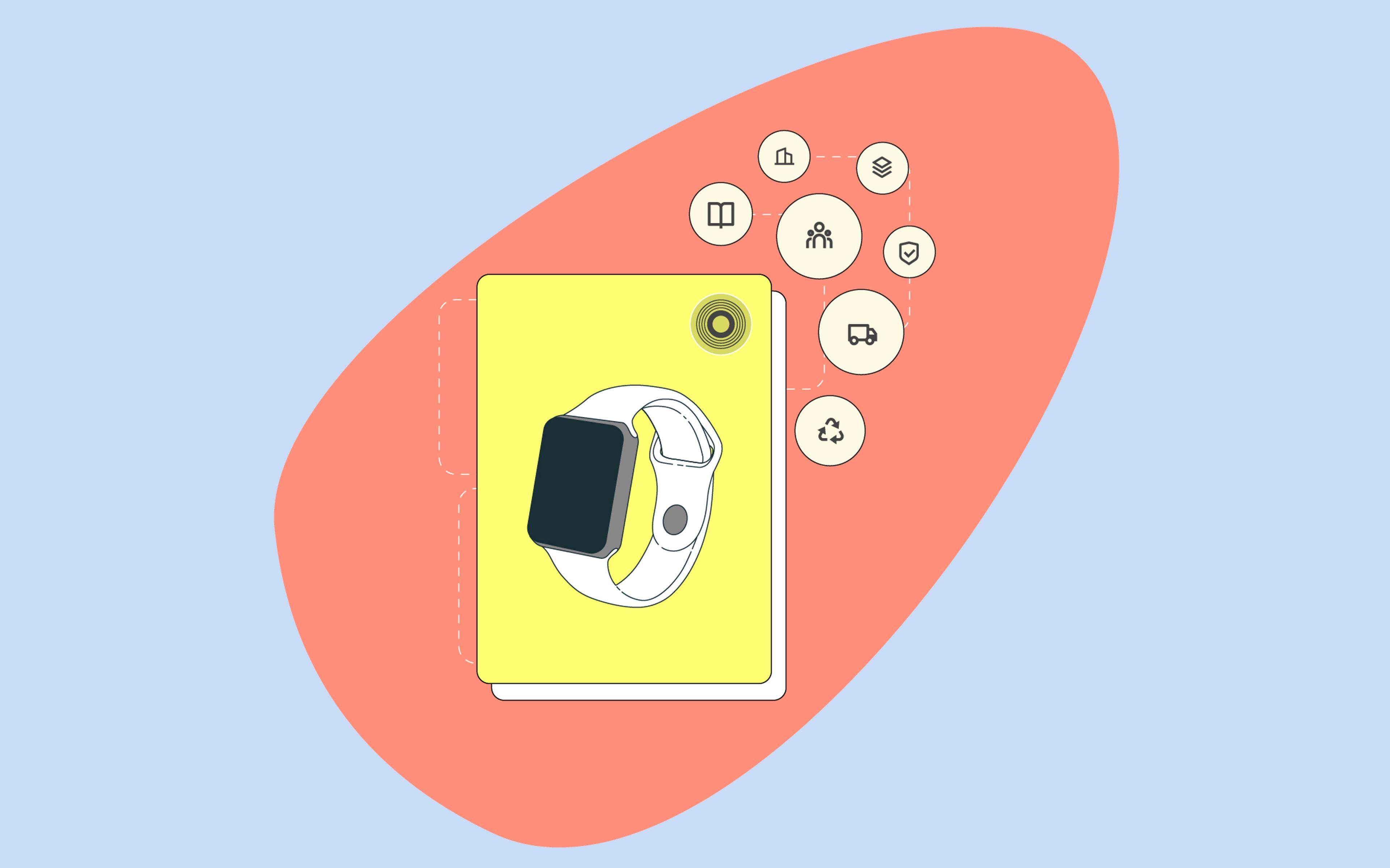With the Ecodesign for Sustainable Products Regulation (ESPR) becoming effective on July 18, 2024, Digital Product Passports (DPPs) are now set to become a reality in the European Union within the next 2-3 years.
While it is still unclear which brands the regulation will affect exactly and what requirements it will entail, if you’re a merchant that manufactures or imports their products in the EU, you should keep up to speed with the state of the legislation so that you’re not unprepared by the time DPPs become mandatory (which is expected in 2026-2027).
Luke Hodgson at Commerce Thinking has published a couple of deeply researched and incredibly thoughtful articles on the subject. You can find them here:
Because Luke has already done an outstanding job of talking about DPPs from a regulatory standpoint, we think it’s worth approaching the topic from a slightly different angle.
More specifically, we’ll outline three ways in which brands can ride the regulatory wave the EU put in motion with the ESPR, augmenting the customer experience around their Digital Product Passports to drive growth and engagement among their audience.
1. Promoting Product Transparency and Circularity
We’d be remiss if we did not mention the very goal the ESPR set out to achieve, which is to promote transparency and circularity in the manufacturing and retail industry. Far from simply being a bureaucratic concern, we think the regulation both reflects and accelerates a broader shift in consumer sentiment.
The signs are strong that consumers are getting tired of the luxury industry’s empty promises and insane markups. As a result, the consumer landscape is getting polarized: on one end, consumers look for value; on the other, they look for artisanality and sustainability. For the latter segment, DPPs are invaluable: pre-purchase, consumers can use them to evaluate a brand’s supply chain and ESG posture; post-purchase, they can learn more on the product and access end-of-life options.
Brands can lead the way here by going above and beyond what the ESPR mandates by investing in a delightful, on-brand consumption experience; by enriching the mandatory data with editorial elements that more deeply connect the consumer to the brand; and by offering easy access to resell, repair, and recycle options.
Example: Many Scandinavian brands do this incredibly well. Among them, Nudie Jeans stands out for the excruciating level of detail available about the supply chain behind each one of their products and their commitment to offering clear, easily accessible end-of-life options to customers.
2. Collecting (and Activating) Zero-Party and First-Party Data
For all the woes suffered by the direct-to-consumer (DTC) channel in recent years, it’s still undeniable that DTC offers brands an unparalleled amount of qualitative and quantitative data. In fact, as brands move to an omnichannel-by-default strategy, they are getting more comfortable with seeing DTC as a channel dedicated almost exclusively to data acquisition , while wholesale and marketplaces are being used to pursue sustainable growth.
In the long term, we believe there’s an opportunity for DPPs to close this gap. By effectively bypassing the sales channel and giving brands a standardized way to re-connect with their end customer, no matter how the product has been purchased, brands will be able to acquire invaluable zero-party and first-party data.
As always, how brands activate this data will ultimately make or break the experience. The most obvious use cases are customer profiling and marketing (e.g., by acquiring their email address and demographics, the brand can create a direct relationship with a previously anonymous customer).
Further down the road, there’s a tangible opportunity to graduate beyond one-way data acquisition, allowing customers to also leverage their DPPs as “proof of ownership” in a centralized or decentralized digital identity system (NFTs are the usual suspect here, but by no means the only possible technology). This would enable even richer marketing activations, more accurate insights into secondary market transactions for a brand’s products, and even peer-to-peer between the brand’s customers.
Example: Armani partners with Certilogo to power their DPPs. When scanning a Certilogo QR code, the consumer is prompted for their email, which is shared with the brand for marketing purposes.
3. Creating Phygital Brand Activations
Finally, DPPs are the perfect conduit for brands looking to create phygital experiences, blending the best of the physical and digital world and allowing customers to experience the brand’s products in novel and engaging ways.
These experiences can show up in a myriad of different shapes and forms: brands can link a customer’s information to the DPP and use it for expedited in-store access; they can grant owners of certain products exclusive perks at select venues and events; or they can allow customers to redeem digital product twins and transfer them to compatible gaming or metaverse platforms.
Phygital activations makes the most sense when the brand’s products can be seamlessly integrated into the customer’s existing day-to-day, which means that collabs are key. The ESPR and broader adoption of DPPs are likely to play an important role here, normalizing the concept of phygital experiences and pushing more brands into the space.
Example: During the latest Hahnenkamm Races in Austria, Hugo Boss partnered with MasterCard to bring their BOSS x Perfect Moment ski jackets to life. An NFC tag embedded in the jacket’s sleeve allowed the wearer to access the races, ski lifts, and an exclusive pop-up store, as well as to execute contactless credit card payments.
Approach Digital Product Passport Investments as R&D Projects
In this article, we have only scratched the surface of the kind of activations that DPPs might enable for consumer brands. The sky’s the limit, and the nature of DPPs means that brands will be able to evolve their implementations long after a product has been sold, continuing to release new interactions that keep the customer engaged with the brand and its products.
With that said, it’s also important to be realistic about the time horizon of the ESPR’s implementation.
DPPs will not become mandatory in the EU until 2026 or 2027–even then, it’s likely that they will only be required for publicly traded organizations initially. Rolling out DPPs in compliance with the EU’s specifications will require significant investments in supply chain transparency and digital capabilities, which are not feasible to expect of smaller operators.
As such, most brands should approach DPP investments as R&D projects at this stage. Now is the time to map out your roadmap to compliance, evaluate vendors, and think about activations that go beyond the regulatory requirements and enrich your brand’s customer experience.
Above all, we urge brands to find the right balance between being ahead of their game and containing their investment. The good news about DPPs is that they are, well, digital–there will always be time to experiment and add more functionality later on. Tests can be run in small, incremental batches on select SKUs before a broader rollout is needed.
As the ESPR is rolled out and consumers start waking up to the new opportunities afforded by DPPs, we expect their usage to become more widespread among the general population. At that point, brands that had already been experimenting will have the data, capabilities, and confidence they need to finalize their implementations and translate their experiments into a tangible competitive advantage.



